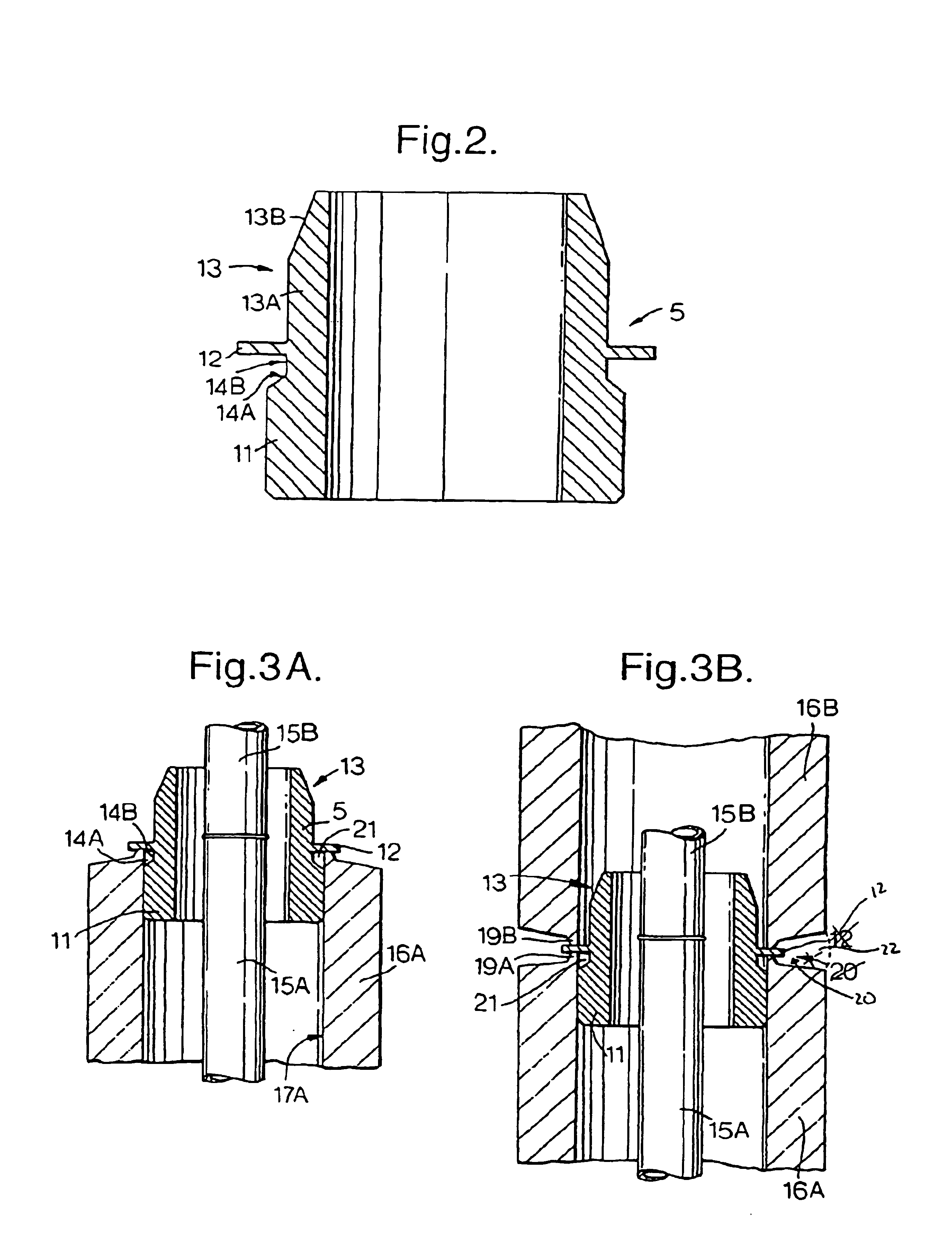Apparatus and method for connecting pipes during underwater pipe-laying
a technology of underwater pipe-laying and apparatus, which is applied in the direction of soldering apparatus, manufacturing tools,auxillary welding devices, etc., can solve the problems of increasing the time taken to complete the welding joint, the use of a pipe-in-pipe design complicating the welding process, and the addition of pipe sections
- Summary
- Abstract
- Description
- Claims
- Application Information
AI Technical Summary
Benefits of technology
Problems solved by technology
Method used
Image
Examples
Embodiment Construction
[0037]FIG. 1 shows a pipeline 1 being laid on a seabed 2 by a J-laying technique using a vessel 3. The vessel 3 has a tower 4, which is shown in FIG. 1 as vertical but may also be adjusted to an angle inclined to the vertical. The upper end of the pipeline 1 is supported by appropriate means of the tower 4 and is lowered down the tower as the pipeline is laid. Additional lengths of pipeline are welded to the upper end of the pipeline as it passes down the tower 4. In the example described, the pipeline 1 is of a pipe-in-pipe design.
[0038]The general technique of J-laying is itself well known and will not be described further here. The distinctive aspect of the present invention concerns the use of an annular member or ring 5, shown in FIG. 2 during the step of welding together the confronting ends of the outer pipes of two pipe-in-pipe lengths of pipeline.
[0039]The ring 5 shown in FIG. 2 is made of steel and generally comprises a first axial part 11, a second flange part 12 and a th...
PUM
 Login to View More
Login to View More Abstract
Description
Claims
Application Information
 Login to View More
Login to View More - R&D
- Intellectual Property
- Life Sciences
- Materials
- Tech Scout
- Unparalleled Data Quality
- Higher Quality Content
- 60% Fewer Hallucinations
Browse by: Latest US Patents, China's latest patents, Technical Efficacy Thesaurus, Application Domain, Technology Topic, Popular Technical Reports.
© 2025 PatSnap. All rights reserved.Legal|Privacy policy|Modern Slavery Act Transparency Statement|Sitemap|About US| Contact US: help@patsnap.com



